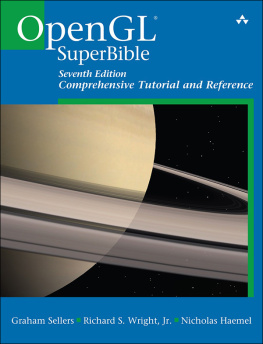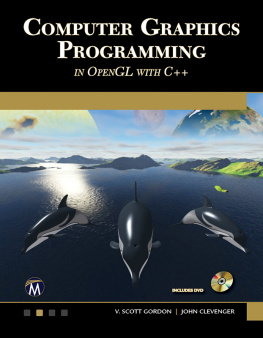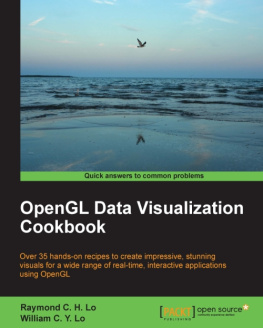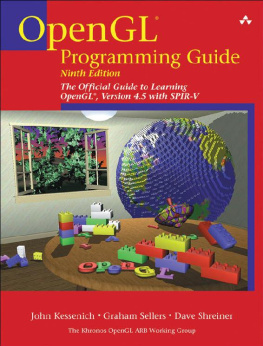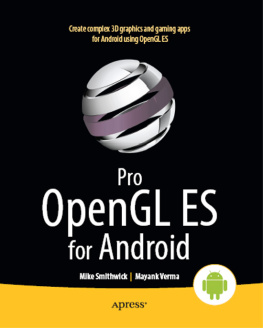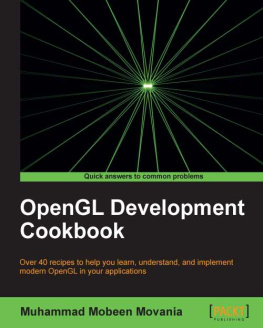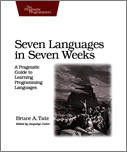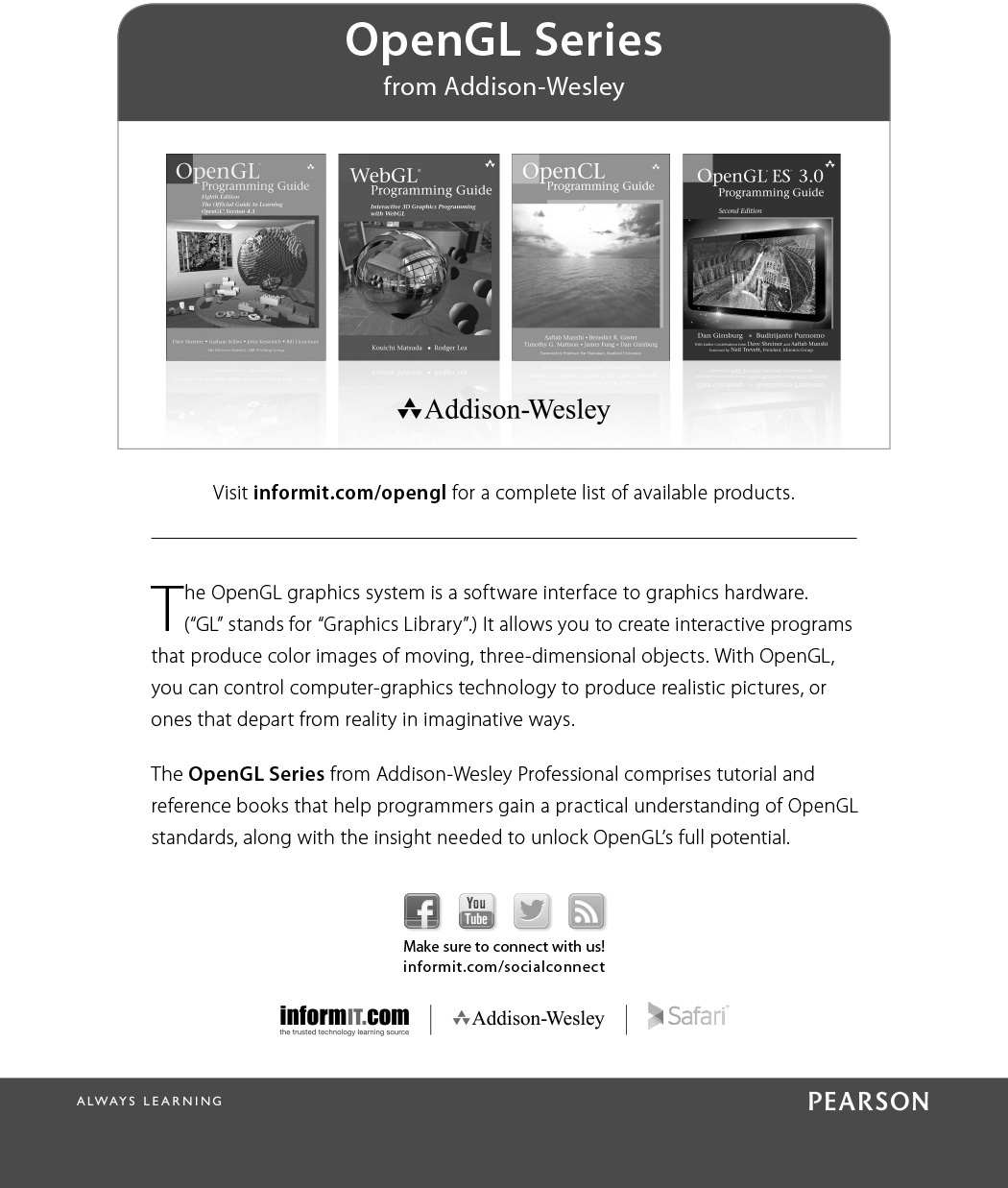Sellers G. - OpenGL Superbible: Comprehensive Tutorial and Reference
Here you can read online Sellers G. - OpenGL Superbible: Comprehensive Tutorial and Reference full text of the book (entire story) in english for free. Download pdf and epub, get meaning, cover and reviews about this ebook. genre: Computer. Description of the work, (preface) as well as reviews are available. Best literature library LitArk.com created for fans of good reading and offers a wide selection of genres:
Romance novel
Science fiction
Adventure
Detective
Science
History
Home and family
Prose
Art
Politics
Computer
Non-fiction
Religion
Business
Children
Humor
Choose a favorite category and find really read worthwhile books. Enjoy immersion in the world of imagination, feel the emotions of the characters or learn something new for yourself, make an fascinating discovery.
- Book:OpenGL Superbible: Comprehensive Tutorial and Reference
- Author:
- Genre:
- Rating:4 / 5
- Favourites:Add to favourites
- Your mark:
OpenGL Superbible: Comprehensive Tutorial and Reference: summary, description and annotation
We offer to read an annotation, description, summary or preface (depends on what the author of the book "OpenGL Superbible: Comprehensive Tutorial and Reference" wrote himself). If you haven't found the necessary information about the book — write in the comments, we will try to find it.
OpenGL SuperBible, Seventh Edition, is the definitive programmers guide, tutorial, and reference for OpenGL 4.5, the worlds leading 3D API for real-time computer graphics. The best introduction for any developer, it clearly explains OpenGLs newest APIs; key extensions; shaders; and essential, related concepts. Youll find up-to-date, hands-on guidance for all facets of modern OpenGL developmentboth desktop and mobile.
The authors explain what OpenGL does, how it connects to the graphics pipeline, and how it manages huge datasets to deliver compelling experiences. Step by step, they present increasingly sophisticated techniques, illuminating key concepts with worked examples. They introduce OpenGL on several popular platforms, and offer up-to-date best practices and performance advice.
This revised and updated edition introduces many new OpenGL 4.5 features, including important ARB and KHR extensions that are now part of the standard. It thoroughly covers the latest Approaching Zero Driver Overhead (AZDO) performance features, and demonstrates key enhancements with new example applications.
Coverage includes:
A practical introduction to real-time 3D graphics, including foundational math.
Core techniques for rendering, transformations, and texturing.
Shaders and the OpenGL Shading Language (GLSL) in depth.
Vertex processing, drawing commands, primitives, fragments, and framebuffers.
Compute shaders: harnessing graphics cards for more than graphics.
Pipeline monitoring and control.
Managing, loading, and arbitrating access to data.
Building larger applications and deploying them across platforms.
Advanced rendering: light simulation, artistic and non-photorealistic effects, and more.
Reducing CPU overhead and analyzing GPU behavior.
Supercharging performance with persistent maps, bindless textures, and fine-grained synchronization.
Preventing and debugging errors.
New applications: texture compression, text drawing, font rendering with distance fields, high-quality texture filtering, and OpenMP. - . iPAD Amazon Kindle, PC , Cool Reader, Calibre, Adobe Digital Editions
Sellers G.: author's other books
Who wrote OpenGL Superbible: Comprehensive Tutorial and Reference? Find out the surname, the name of the author of the book and a list of all author's works by series.

